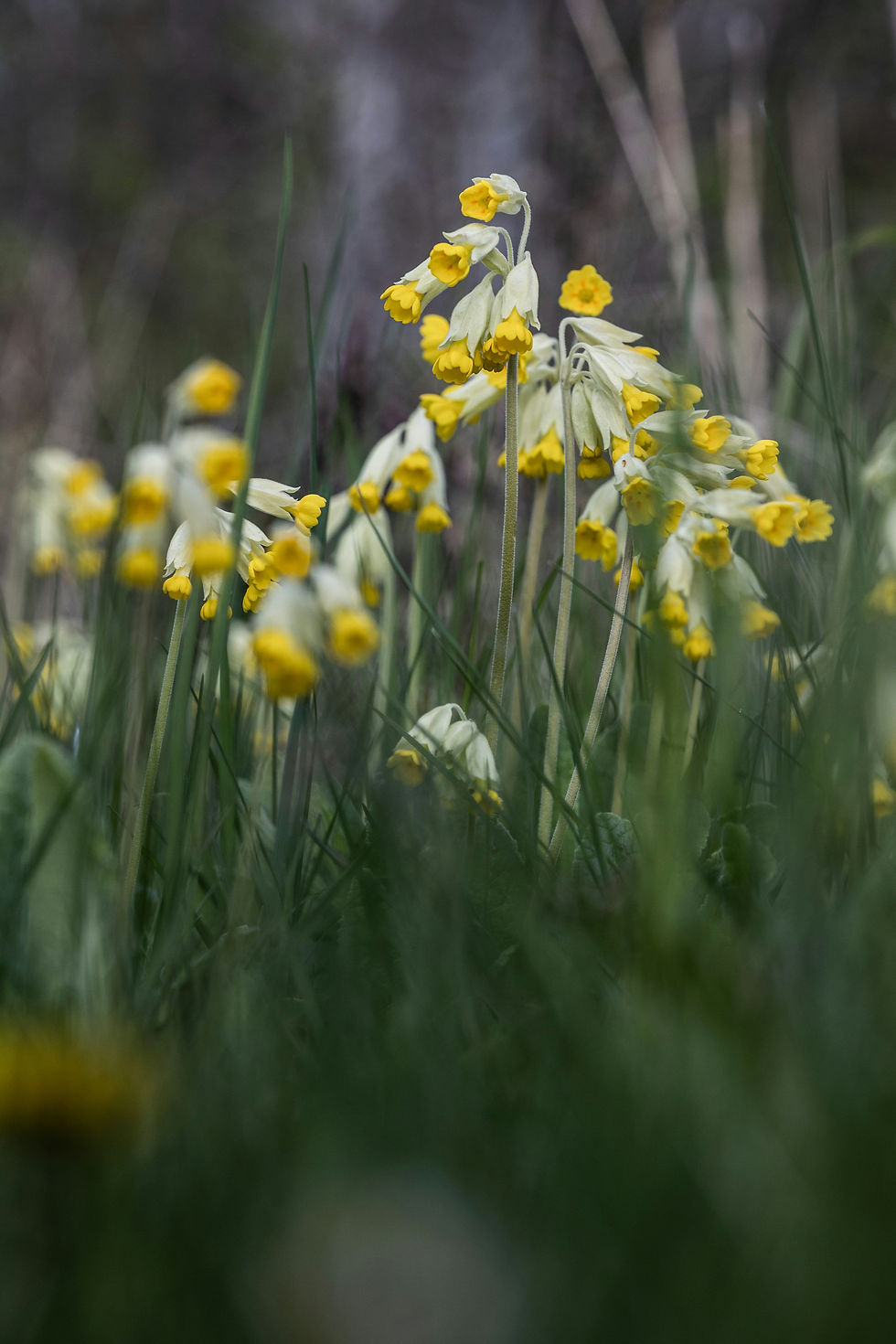PLANT OF THE MONTH: Cowslip
- Helen Harris

- May 30, 2024
- 2 min read
Updated: May 1

Common name: Cowslip
Scientific name: Primula veris
Family: Primroses
Origin: native
Flowering season: April to May
Habitat: dry chalky soils, grassland, woodland, hedgerows
We have a beautiful and growing little patch of self-seeded cowslips at Rosamund Garden, under the crab apple between poly 1 and the wildlife pond. They are now in full flower and will hopefully set seed and spread further.
An endangered wildflower
Formerly a common plant of traditional hay meadows, ancient woodlands and hedgerows, the loss of these habitats has caused a major decline in cowslip’s populations between 1930 and 1980, mainly due to the ploughing of old grasslands and the extension of the use of chemical herbicides.
Nowadays, fields coloured bright yellow with cowslips are quite a rare sight. Fortunately, it is now showing signs of recovery and is returning to unsprayed verges and village greens as well as colonising the banks of new roads. Masses have reappeared in Hertfordshire where grazing pressures have eased.
Value to wildlife
Cowslips are important for wildlife because their flowers are an early source of nectar for various insects including bees, beetles and butterflies such as the brimstone. Cowslip is also a food plant for the rare Duke of Burgundy butterfly.
Folklore and symbolism
Cowslips were traditionally used in May Day garlands but also for other celebrations, such as weddings. The name ‘Cowslip’ is actually a distorted pronunciation of ‘cow slop’, so named because the flowers are associated with cow pat in meadows and fields. Cowslips have also been called ‘St. Peter’s keys’, ‘keys of heaven’, ‘bunch of keys’ or ‘herb Peter’ because the one-sided flower heads looked like a set of keys, and it was said that cowslips grew where St. Peter dropped the Key of Earth.
Cowslip has many other folk names due to its historical importance and fame, including 'paigles', ‘freckled face’, ‘golden drops’, ‘fairies’ flower’, ‘lady’s fingers’, ‘long legs’ and ‘milk maidens’. In Welsh, the flower is known as ‘dagrau Mair’ which translates to ‘Mary’s tears’.
Cowslip uses
Tea made from the flowers is meant to be good for insomnia, headaches and nervous tension. The scented flowers also make delicious wines. Cowslip leaves are used in Spanish cooking and have a slightly citrusy flavour and the flowers are traditionally used to make wine.
The cowslip is the county flower for Essex, Northamptonshire, Surrey and Worcestershire.








Comments